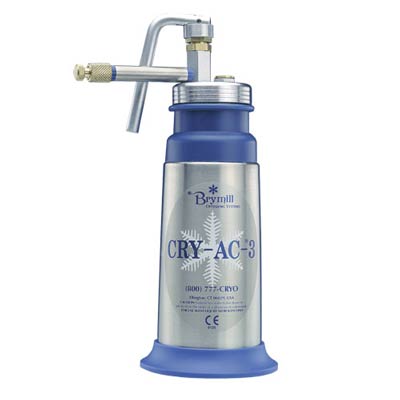 Cryotherapy is one of the most popular treatments in the dermatology clinic. Patients will often joke about the silver canister accessory skin physicians so often carry with then into patient examination rooms. But many patients don’t appreciate the full benefits of cryotherapy, and all the skin conditions it can treat.
Cryotherapy is one of the most popular treatments in the dermatology clinic. Patients will often joke about the silver canister accessory skin physicians so often carry with then into patient examination rooms. But many patients don’t appreciate the full benefits of cryotherapy, and all the skin conditions it can treat.
What is Cryotherapy?
Simply put, cryotherapy means cold therapy. It involves exposing your skin to freezing substances; Liquid Nitrogen is the standard substance used. For effectiveness, your skin is subjected to temperatures as low as -321 degrees. It might seem odd, but it really has positive results.
What Does the Procedure Do?
What the procedure does is that it freezes the superficial epidermal lesions on your skin. As a result, superficial skin cancers, seborrheic keratosis, skin tags, vascular lesions such as angiomas, sun damage, dark spots, and lesions are obliterated, leaving your skin healthy.
According to Dr. Adam Mamelak, a certified Dermatologist in Austin, Texas, the unwanted skin lesion in the blister peels off after 2 to 3 days. Afterward, the treatment process may take approximately one or two weeks for the area to heal and healthy skin regrowth.
What Else Can Cryotherapy Treat?
Dermatologists also use cryotherapy to treat warts. Furthermore, cryotherapy is recommended for treating sun-damaged skin.
What are the Benefits?
This tends to be the most critical question that most people consider before visiting a dermatologist. Well, cryotherapy is a scientifically proven method that is highly successful, which means that it comes with many benefits on your skin.
Consider cryotherapy important as it treats skin cancer and precancerous actinic keratosis lesions on your skin.
Is Cryotherapy Safe?
Any dermatologist will tell you that there are chances of risks involved in any treatment. Therefore, cryotherapy is not an exception.
As you already know, the work of cryotherapy is to remove skin growth or tumors, which should be done with a single treatment. However, where this fails to occur, you might be subjected to a series of treatments to ensure that the lesions are completely removed.
Therefore, sometimes you might experience some kind of pain, which will eventually disappear. Also, the blister on the treated area might cause you some discomfort. But you don’t need to worry about that as it won’t last long.
Bleeding and change in sensation are infrequent complications that you don’t need to worry about.
Care After Treatment
Like other standard treatments, you need to have a skincare routine for full ‘recovery’ of your skin. This involves cleaning the treated area with soap and water. You can do this at least twice a day.
Also, you can use antibiotic ointments or petroleum jelly to speed up the healing process. The sun can be harmful to your skin if you have not fully recovered, therefore Dr. Mamelak advises patients to cover treated areas to help avoid exposure to the sun.
With all this in mind, if you are experiencing problems with your skin, you don’t need to worry as you might be on your way to healthy skin.
For more information on cryotherapy treatment or procedures, you can contact us today.
